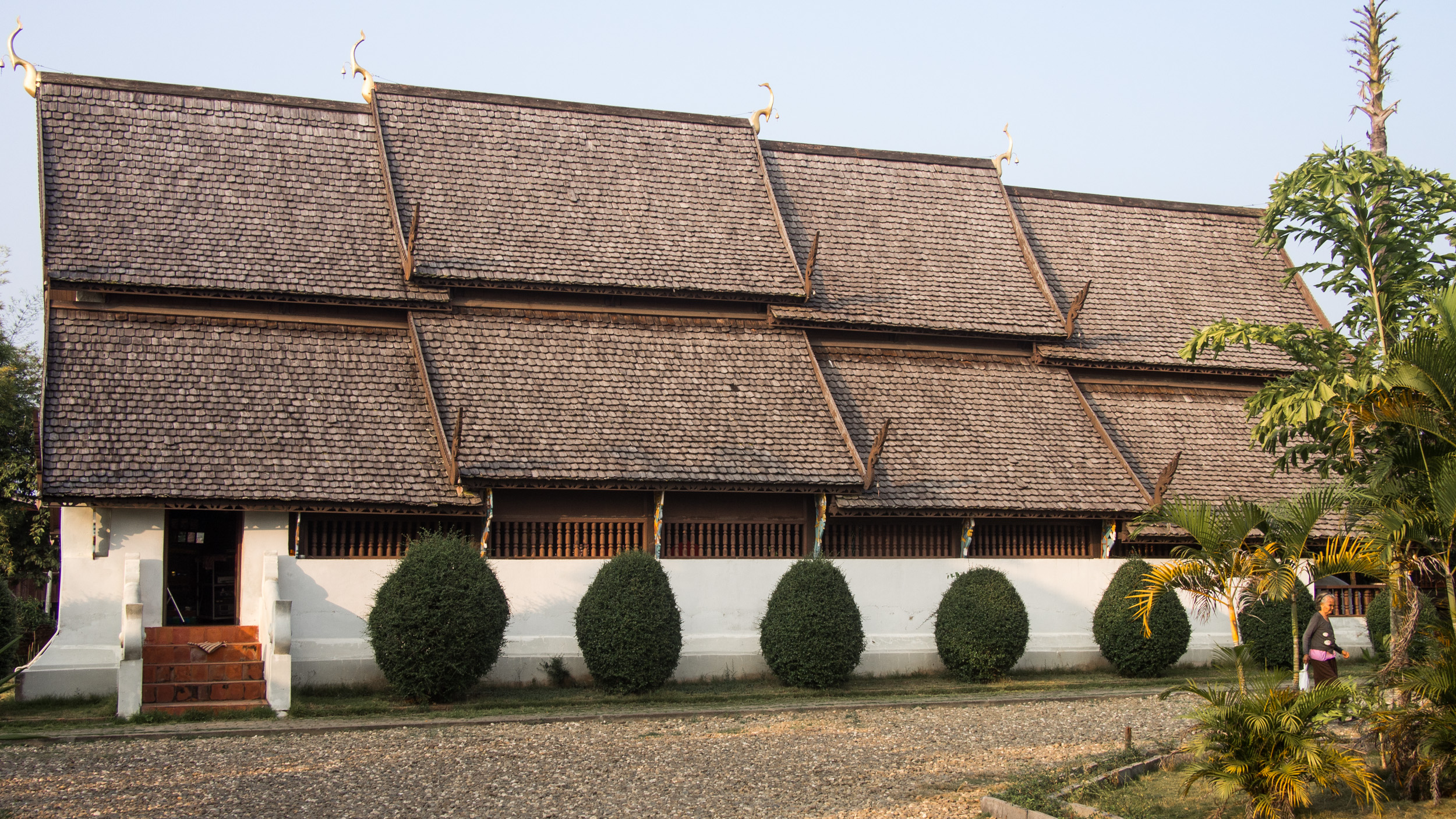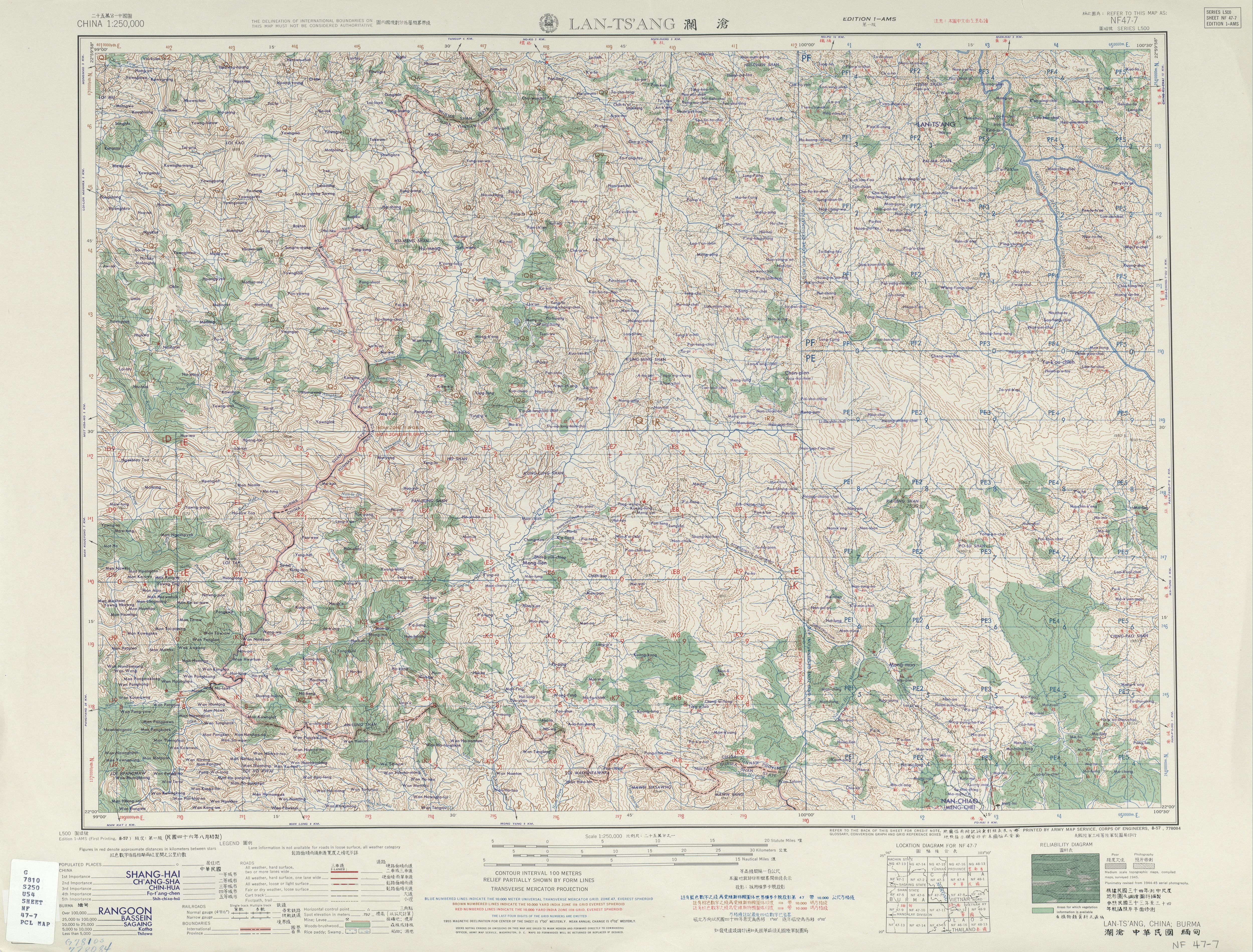|
Menglian
Menglian Dai, Lahu and Va Autonomous County (; Awa: ) is an autonomous county in the southwest of Yunnan Province, China, bordering Ximeng County to the north, Lancang County to the north, northeast, and east, and Burma's Shan State to the south and west. It is the westernmost county-level division of Pu'er City. Administrative divisions Menglian Dai, Lahu and Va Autonomous County comprises five towns and two townships. ;Towns ;Townships * Jingxin () * Gongxin () Climate See also *Mong Lem *Dai people *Lahu people *Va people The Wa people ( Wa: Vāx; , ; ; ''Wáa'') are a Southeast Asian ethnic group that lives mainly in Northern Myanmar, in the northern part of Shan State and the eastern part of Kachin State, near and along Myanmar's border with China, as well as ... References External linksMenglian County Official Site County-level divisions of Pu'er City Dai autonomous counties Lahu autonomous counties Wa autonomous counties {{Yunnan-geo-stub ... [...More Info...] [...Related Items...] OR: [Wikipedia] [Google] [Baidu] |
Wa Language
Wa (Va) is an Austroasiatic language spoken by the Wa people of Myanmar and China. There are three distinct varieties, sometimes considered separate languages; their names in ''Ethnologue'' are Parauk, the majority and standard form; Vo ( Zhenkang Wa, 40,000 speakers) and Awa (100,000 speakers), though all may be called ''Wa'', ''Awa'', ''Va'', ''Vo''. David Bradley (1994) estimates there are total of 820,000 Wa speakers. It is Recognized as a State Language by the government of Wa State. Distribution and variants Gerard Diffloth refers to the Wa geographic region as the "Wa corridor", which lies between the Salween and Mekong Rivers. According to Diffloth, variants include South Wa, "Bible Wa" and Kawa (Chinese Wa). Christian Wa are more likely to support the use of Standard Wa, since their Bible is based on a standard version of Wa, which is in turn based on the variant spoken in Bang Wai, 150 miles north of Kengtung (Watkins 2002). Bang Wai is located in Northern Shan ... [...More Info...] [...Related Items...] OR: [Wikipedia] [Google] [Baidu] |
Pu'er City
Pu'er is a prefecture-level city in southern Yunnan Province, China. Pu'er City governs 9 counties, 1 district, 103 townships (towns), and a total population of 2.65 million. The urban administrative center of Pu'er is Simao District, which is also the former name of the prefecture-level city itself. A major downturn in the price of tea in 2007 caused severe economic distress in the area. The price of Pu'er has since recovered and Pu'er tea, a type of dark tea, still contributes much to the income of the area. Etymology Nanzhao set a division called Bu'ri Jian ( zh, labels=no, 步日瞼) in 839 AD; this was the first time the region was integrated into the administrative system of a Chinese dynasty. In the Yuan dynasty, the central government changed the name to Pu'ri ( zh, labels=no, 普日) in 1278. Finally in Ming dynasty, the name was changed to "Pu'er" ( zh, labels=no, 普耳) in 1384. The character of "er" ( zh, labels=no, 耳) was changed to 洱 in Wanli Emperor period. ... [...More Info...] [...Related Items...] OR: [Wikipedia] [Google] [Baidu] |
Autonomous County
Autonomous counties () and autonomous banners () are Counties of China, county-level autonomous administrative divisions of China. Autonomous counties tend to have a large number of ethnic minority citizens compared to ordinary counties (if not an outright majority), or are the historic home of a significant minority population. There are 117 autonomous counties and three autonomous Banners of Inner Mongolia, banners. The latter are found in Inner Mongolia, Inner Mongolia Autonomous Region and the former are found everywhere else. Maps List History Former autonomous counties of China See also * References External links * BJreview.com: "Regional Autonomy for Ethnic Minorities in China" {{authority control Autonomous counties of the People's Republic of China, Autonomous administrative divisions of China, C County-level divisions of the People's Republic of China, * Counties of China Lists of counties, China, PRC Autonomous ... [...More Info...] [...Related Items...] OR: [Wikipedia] [Google] [Baidu] |
Wa People
The Wa people ( Wa: Vāx; , ; ; ''Wáa'') are a Southeast Asian ethnic group that lives mainly in Northern Myanmar, in the northern part of Shan State and the eastern part of Kachin State, near and along Myanmar's border with China, as well as in China's Yunnan Province. Historically, the Wa have inhabited the Wa States, a territory that they have claimed as their ancestral land since time immemorial. It is a rugged, mountainous area located between the Mekong and the Salween River, with the Nam Hka flowing across it. The Wa traditionally practiced subsistence agriculture by cultivating rice, peas, beans, poppies and walnuts. They bred water buffaloes, which they used mainly for sacrificial purposes. Generally, the traditional customs of the Wa, as well as their lifestyle, are very similar to those of the Naga people further to the Northwest. The Wa people speak the Wa language which is part of the Mon-Khmer group of languages. Many of the Wa are animists and a small prop ... [...More Info...] [...Related Items...] OR: [Wikipedia] [Google] [Baidu] |
Dai People
The Dai people ( Burmese: ရှမ်းလူမျိုး; ; ; ; , ; , ; zh, c=, p=Dǎizú) are several Tai-speaking ethnic groups living in the Xishuangbanna Dai Autonomous Prefecture and the Dehong Dai and Jingpo Autonomous Prefecture of China's Yunnan Province. The Dai people form one of the 56 ethnic groups officially recognized by the People's Republic of China. By extension, the term can apply to groups in Laos, Vietnam, Thailand and Myanmar when Dai is used to mean specifically Tai Yai, Lue, Chinese Shan, Tai Dam, Tai Khao or even Tai in general. For other names, see the table below. Name ambiguity The Dai people are closely related to the Shan, Lao and Thai people who form a majority in Laos and Thailand, and a large minority in Myanmar. Originally, the Tai, or Dai, lived closely together in modern Yunnan Province until political chaos and wars in the north at the end of the Tang and Song dynasty and various nomadic peoples prompted some to move furth ... [...More Info...] [...Related Items...] OR: [Wikipedia] [Google] [Baidu] |
Autonomous County
Autonomous counties () and autonomous banners () are Counties of China, county-level autonomous administrative divisions of China. Autonomous counties tend to have a large number of ethnic minority citizens compared to ordinary counties (if not an outright majority), or are the historic home of a significant minority population. There are 117 autonomous counties and three autonomous Banners of Inner Mongolia, banners. The latter are found in Inner Mongolia, Inner Mongolia Autonomous Region and the former are found everywhere else. Maps List History Former autonomous counties of China See also * References External links * BJreview.com: "Regional Autonomy for Ethnic Minorities in China" {{authority control Autonomous counties of the People's Republic of China, Autonomous administrative divisions of China, C County-level divisions of the People's Republic of China, * Counties of China Lists of counties, China, PRC Autonomous ... [...More Info...] [...Related Items...] OR: [Wikipedia] [Google] [Baidu] |
Lancang County
Lancang Lahu Autonomous County (; Lahu: ) is an autonomous county under the jurisdiction of Pu'er City, in southwestern Yunnan province, China. Lancang is the same as Lan Xang, and refers to the Mekong River (known in Chinese as the Lancang) on its eastern borders and adopted by modern Laos, a Tai word meaning ''Million Elephants''. History In 1988, the county was struck by a magnitude 7.6 earthquake. It was followed by a second damaging event shortly after. The two events killed a total of 939 people. Administrative divisions Lancang Lahu Autonomous County comprises five towns, nine townships and six ethnic townships. ;Towns ;Townships ;Ethnic townships Ethnic groups A large portion of the population are of Lahu ethnicity, and Lahu language is one of the official languages in the county. The Akha language, whose speakers are officially classified as Hani people, is also spoken in Lancang County. Ethnic Hani townships include Fazhan 发展河哈尼族乡 and Jiujin ... [...More Info...] [...Related Items...] OR: [Wikipedia] [Google] [Baidu] |
Nayun
Momoland (, stylized in all caps) is a South Korean girl group formed by MLD Entertainment (formerly known as Duble Kick Company) through the 2016 reality show ''Finding Momoland''. The show's winners Hyebin, Yeonwoo, Jane, Nayun, JooE, Ahin, and Nancy served as the original members. Their debut mini album '' Welcome to Momoland'' was released on November 10, 2016. In 2017, Momoland became a nine-member group when Daisy and Taeha joined as members. In 2019, Taeha and Yeonwoo left the group, while Daisy departed in 2020. The group disbanded on February 14, 2023. On April 10, 2025, the six members of the group signed exclusive contracts with Inyeon Entertainment and decided to continue team activities.On May 8, 2025, Inyeon Entertainment officially announced signed an exclusive contract with Momoland members Hye-bin, Jane, Nayun, Joo-E, Ahin, and Nancy and joined the team activities. History 2016: ''Finding Momoland'' and ''Welcome to Momoland'' In June 2016, Mnet's survival pr ... [...More Info...] [...Related Items...] OR: [Wikipedia] [Google] [Baidu] |
Dai Autonomous Counties
Dai may refer to: Names * Dai (given name), a Welsh or Japanese masculine given name * Dai (surname) (戴), a Chinese surname * Bảo Đại (保大), Emperor of Vietnam from 1926 to 1945 Places and regimes * Dai Commandery, a commandery of the state of Zhao and in early imperial China * Dai County, in Xinzhou, Shanxi, China * Dai (Eighteen Kingdoms), a short-lived state during the Eighteen Kingdoms period in Chinese history * Dai (Han dynasty), a realm and title during the Han dynasty * Dai (Sixteen Kingdoms), a Xianbei-led dynastic state during the Sixteen Kingdoms era of Chinese history * Dai (Spring and Autumn period), a state during the Spring and Autumn period in Chinese history * Dai (Warring States period), a short-lived state during the Warring States period in Chinese history People and language * Da'i al-Mutlaq, or Da'i, a type of religious leader in Islam * Da'i, person engaging in Dawah, the act of inviting people to Islam * Dai language (other) * Dai pe ... [...More Info...] [...Related Items...] OR: [Wikipedia] [Google] [Baidu] |
Province (China)
Provinces ( zh, c=省, p=Shěng) are the most numerous type of province-level divisions in the People's Republic of China (PRC). There are currently 22 provinces administered by the PRC and one province that is claimed, but not administered, which is Taiwan, currently administered by the Republic of China (ROC). The local governments of Chinese provinces consists of a Provincial People's Government headed by a governor that acts as the executive, a Provincial People's Congress with legislative powers, and a parallel provincial branch of the Chinese Communist Party (CCP) that elects a party secretary and a provincial standing committee. Government Provinces are the most common form of province-level governments. The legislative bodies of the provinces are the Provincial People's Congresses. The executive branch is the Provincial People's Government, led by a governor. The People's Government is answerable to both the State Council and the Provincial People's Congress. T ... [...More Info...] [...Related Items...] OR: [Wikipedia] [Google] [Baidu] |



